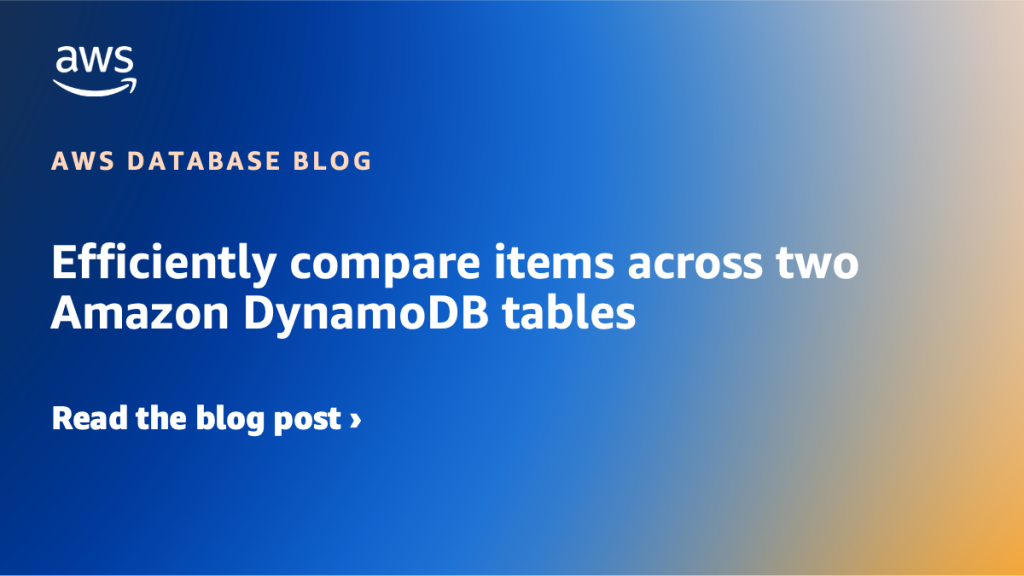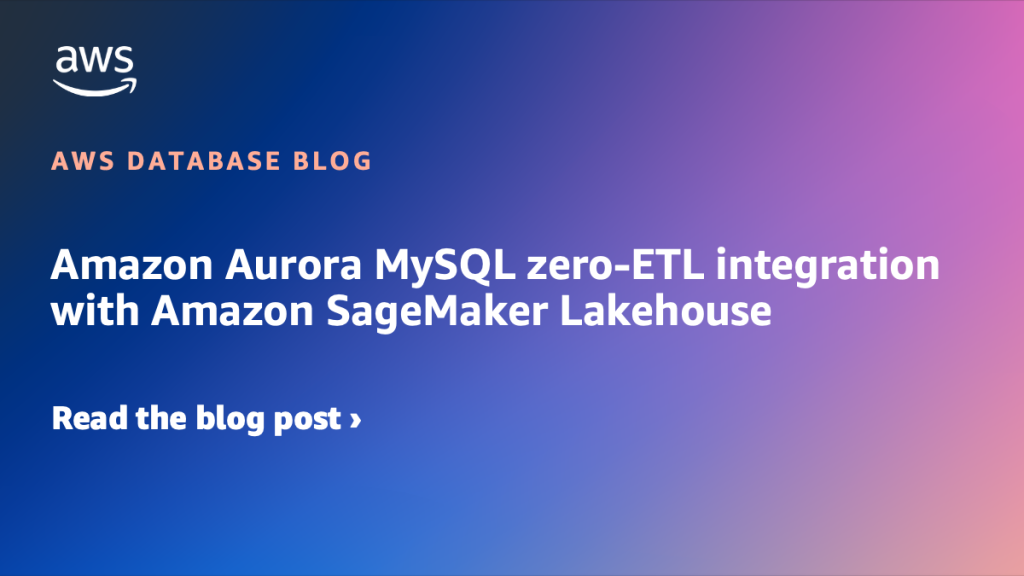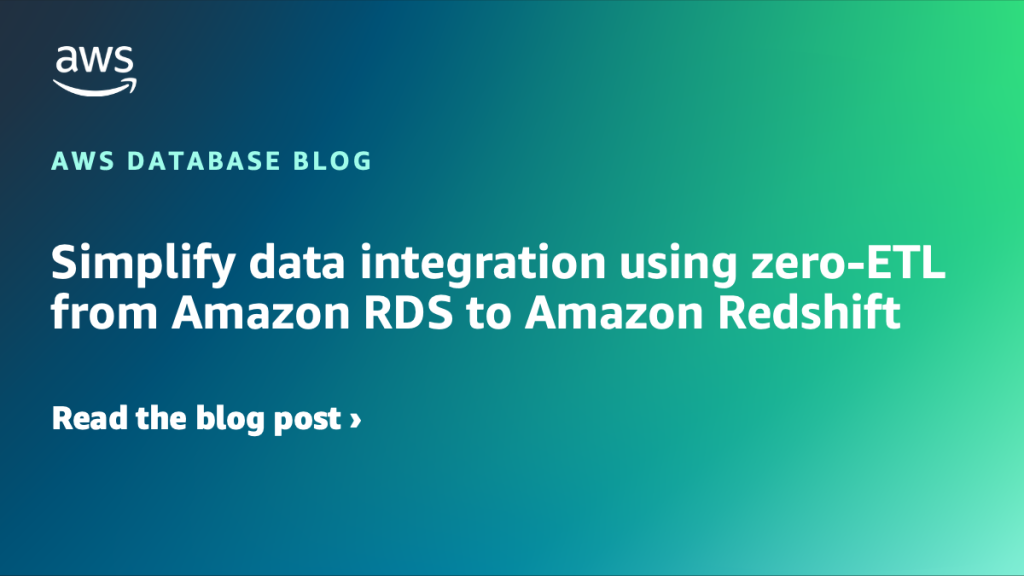AWS Database Blog
Category: Analytics
Efficiently compare items across two Amazon DynamoDB tables
In this post, we show an algorithm to efficiently compare two Amazon DynamoDB tables and find the differences between their items. We provide an example where two tables, each containing approximately half a billion items, are compared in less than 7 minutes, for less than $10.
Rate-limiting calls to Amazon DynamoDB using Python Boto3, Part 2: Distributed Coordination
Part 1 of this series showed how to rate-limit calls to Amazon DynamoDB by using Python Boto3 event hooks. In this post, I expand on the concept and show how to rate-limit calls in a distributed environment, where you want a maximum allowed rate across the full set of clients but can’t use direct client-to-client communication.
GroundTruth reduces costs by 45% and improves reliability migrating from Aerospike to Amazon ElastiCache for Valkey
GroundTruth, an advertising platform leading the way in location- and behavior-based marketing, empowers brands to connect with consumers through real-world behavioral data to drive real business results. As our advertising platform scaled to process increased volume of ad requests and third-party segment ingestion, maintaining our Aerospike-based caching infrastructure introduced significant operational complexity and rising costs, while also compromising performance and limiting our ability to scale efficiently. To meet our requirements we implemented Amazon ElastiCache for Valkey, which streamlined our operations, improved reliability, and reduced costs. In this post, we walk through our migration journey, covering the migration strategy we adopted, the optimizations we made to reduce cost by 45%, reliability improvements including reducing write failures by 20x, and operational gains from managed service capabilities.
Amazon Aurora MySQL zero-ETL integration with Amazon SageMaker Lakehouse
In this post, we explore how zero-ETL integration works, the key benefits it delivers for data-driven teams, and how it aligns with the broader zero-ETL strategy in AWS services. You’ll learn how this integration can enhance your data workflows, whether you’re building predictive models, entering interactive SQL queries, or visualizing business trends. By eliminating traditional extract, transform, and load (ETL) processes, this solution enables real-time intelligence securely and at scale to help you make faster, data-driven decisions.
Simplify data integration using zero-ETL from Amazon RDS to Amazon Redshift
Organizations rely on real-time analytics to gain insights into their core business drivers, enhance operational efficiency, and maintain a competitive edge. Traditionally, this has involved the use of complex extract, transform, and load (ETL) pipelines. ETL is the process of combining, cleaning, and normalizing data from different sources to prepare it for analytics, AI, and […]
Accelerate SQL Server to Amazon Aurora migrations with a customizable solution
Migrating from SQL Server to Amazon Aurora can significantly reduce database licensing costs and modernize your data infrastructure. To accelerate your migration journey, we have developed a migration solution that offers ease and flexibility. You can use this migration accelerator to achieve fast data migration and minimum downtime while customizing it to meet your specific business requirements. In this post, we showcase the core features of the migration accelerator, demonstrated through a complex use case of consolidating 32 SQL Server databases into a single Amazon Aurora instance with near-zero downtime, while addressing technical debt through refactoring.
Better together: Amazon RDS for SQL Server and Amazon SageMaker Lakehouse, a generative AI data integration use case
Generative AI solutions are transforming how businesses operate worldwide. It has now become paramount for businesses to integrate generative AI capabilities into their customer-facing services and applications. The challenge they often face is the need to use massive amounts of relational data hosted on SQL Server databases to contextualize these new generative AI solutions. In this post, we demonstrate how you can address this challenge by combining Amazon RDS for SQL Server and Amazon SageMaker Lakehouse.
Amazon DynamoDB zero-ETL integration with Amazon SageMaker Lakehouse – Part 2
Amazon DynamoDB zero-ETL integration with Amazon SageMaker Lakehouse allows you to run analytics workloads on your DynamoDB data without having to set up and manage extract, transform, and load (ETL) pipelines. In this post we cover setting up Amazon SageMaker Unified Studio, followed by running data analysis to showcase its capabilities. We illustrate our solution walkthrough with an example of a credit card company that wants to analyze its customer behavior and spending trends.
Amazon DynamoDB zero-ETL integration with Amazon SageMaker Lakehouse – Part 1
Amazon DynamoDB zero-ETL integration with Amazon SageMaker Lakehouse allows you to run analytics workloads on your DynamoDB data without having to set up and manage extract, transform, and load (ETL) pipelines. In this two-part series, we first walk through the prerequisites and initial setup for the zero-ETL integration. In Part 2, we cover setting up Amazon SageMaker Unified Studio, followed by running data analysis to showcase its capabilities. We illustrate our solution walkthrough with an example of a credit card company that wants to analyze its customer behavior and spending trends.
Graph-powered authorization: Relationship based access control for access management
Authorization systems are a critical component of modern applications, yet traditional approaches like role-based access control (RBAC) and attribute-based access control (ABAC) struggle to meet the complex access control requirements of today’s enterprises. In this post, we introduce a relationship-based access control (ReBAC) as an alternative for enterprise scale authorization. We explore how the proposed […]









